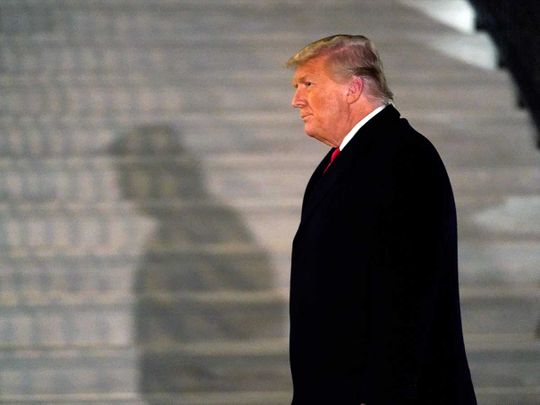
As the dust settles from 6 January storming of the Capitol in Washington by thousands of President Donald Trump ardent supporters; resulting in tragic deaths and the desecration of the most treasured symbol of America’s democracy, many questions have risen from that incident that has shocked not only Americans but the world as well.
Aside from the political fallout; the culpability of Trump in inciting his supporters to march to the Capitol and pressure lawmakers into reversing the outcome of last November presidential elections, the question of how big tech companies have reacted to Trump’s outrageous use of their social media platforms has become the subject of national debate.
Simply put the question is do high tech companies and their executives have the right to ban the president and his allies from using these platforms?
The issue is divisive and will continue to be. Trump’s supporters say it infringes on the right to free speech and that Silicon Valley companies are in bed with the radical left to silence “patriotic” voices that warn of a conspiracy to turn America into a socialist country.
Social media companies that have banned Trump say that he has abused the privilege of free speech to incite violence while spreading lies and discord which led to the unfortunate storming of the Capitol.
Complexity of media ecosystem
The ensuing debate underlines the complexity of today’s media ecosystem which the internet has created. The evolution of public platforms; bulletin boards, blogs, personal websites, chat and messaging apps and the leading social media platforms like Twitter, Facebook, YouTube, Instagram and many others have empowered billions of people all over the world in a unique way.
The speed at which this has happened has taken many countries by surprise leading to the introduction of cybercrime laws, firewalls and strict censoring of what people can post online.
Before the internet, peoples’ ability to express an opinion publicly was limited to traditional media outlets; print media, radio and television which are regulated and where editors have the right to delete or edit what is being published or aired. Aside from the mainstream media, yellow journalism in the form of tabloids offered a wider ambit of public exchange but also with limits constrained by libel laws.
In the age of the internet and the rise of the power and influence of social media platforms things go more complicated. The so-called dark web allowed a motley group of people to perform overt activities from watching illegal porn to establishing conspiracy theory groups; some with radical ideas that seek to overthrow governments.
Communications Decency Act
Before Trump was banned from Twitter, he had called on lawmakers to repeal section 230 of the Communications Decency Act, which is the law that gives internet platforms immunity from what their users post on them.
His efforts had failed but ironically if he had succeeded his own posts and that of his supporters would be the main victim. Trump’s rise to political stardom was greatly owed to his smart use of social media platforms to mobilise and unite followers.
Even as he spread controversial claims about Mexicans, Muslims, immigrants and the radical left, Twitter and others did nothing to suppress his tweets and posts when he was a candidate and later for the most part of his presidency. It is only when he rejected the outcome of the presidential elections, claiming large scale fraud that Twitter began to post disclaimers that his tweets are disputed. This is when he repeated his calls to repeal section 230.
As he got frustrated with Twitter and the conservative mouthpiece Fox News, Trump began urging his supporters to migrate to fringe outlets such as ONA TV network and Parler, a Twitter-like platform for the far right. These outlets have little or no regulation and allow conspiracy theory groups like QAnon to disperse fake and outrageous misinformation.
Capitol storming
The reaction to the Capitol storming has been so strong that Google and Apple removed Parler from their app stores while Amazon pulled the plug on Parler removing it from its servers.
Legal experts defend the decision by social media outlets to ban Trump and his loyalists saying that this is not a First Amendment issue and that it is up to private companies to regulate their platforms as they see fit. Others believe that the ban while legal violates the spirit of free speech and limits the exchange of views.
Ironically Twitter’s stock lost some value last Monday as investors expressed worries that future regulation might hurt the company. It is clear that the debate over free expression on social media will continue long after Trump is gone.
With billions of people online today, social media platforms present an unprecedented challenge for regulators, national security bodies and governments.
The spread of misinformation, rumours and calls for incitement, and violence is only part of the dilemma that we as citizens and decision makers face today. As these platforms evolve so will attempts to regulate and control them.
Osama Al Sharif is a journalist and political commentator based in Amman.





